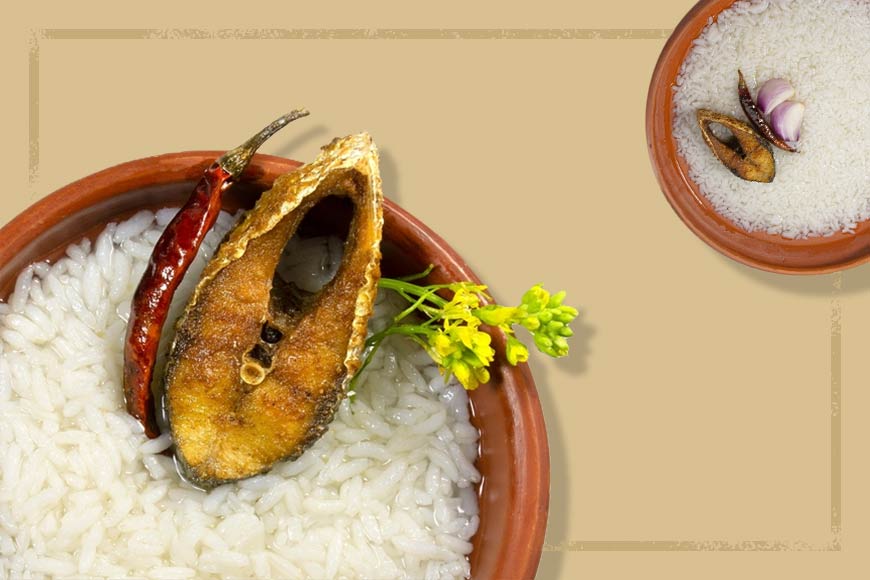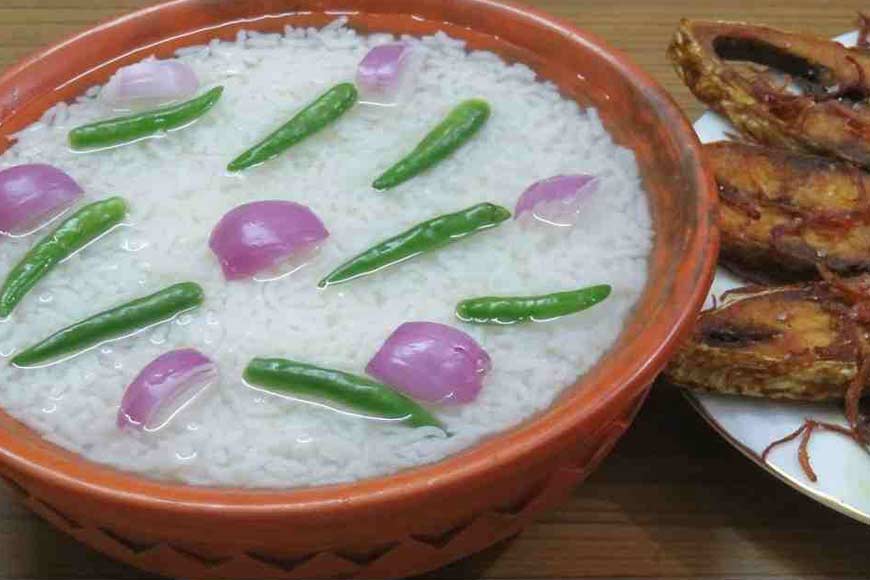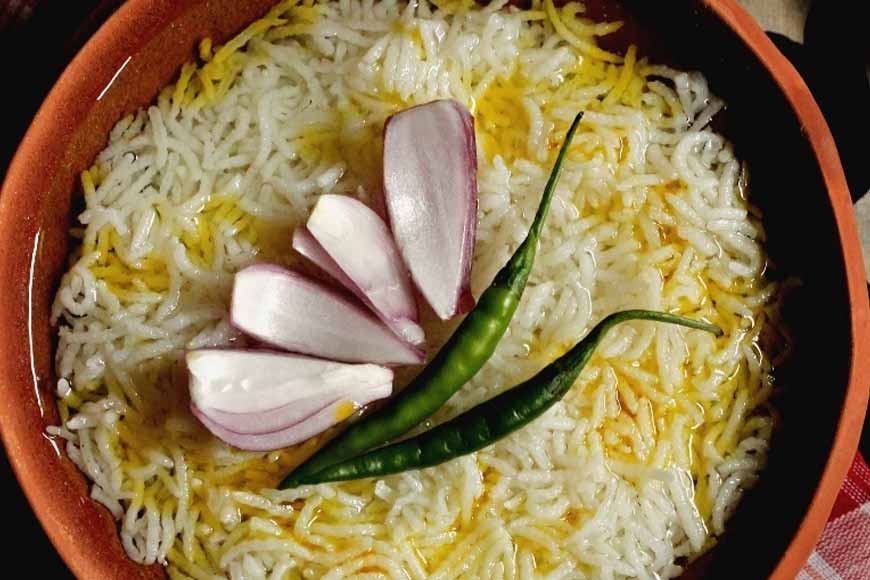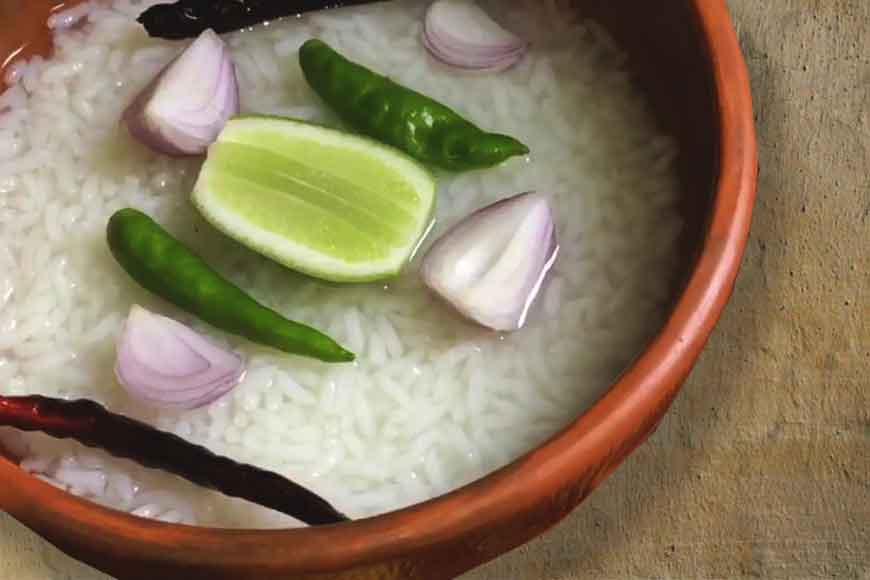The enduring charm of pantabhaat in Bengali cuisine—GetBengal story

In the historical tapestry of Bengal's cuisine, a humble dish reigns supreme: panta bhaat. Its origins trace back centuries, with Friar Sebastian Manrique's 17th-century accounts shedding light on its pervasive presence among the populace. Across communities, from farmers to city dwellers, the simplicity of a meal comprising panta bhaat, salt, and green vegetables sufficed for sustenance. This unassuming combination spoke volumes about the culinary ethos of Bengal—a land where modesty in fare belied the richness of tradition and resourcefulness.

Panta bhaat traditionally hails from rural Bengal and finds its roots in the resourcefulness of farmers. Born out of the necessity to utilize leftover rice, it became a staple breakfast choice for those labouring in the fields. Its simplicity and ease of preparation appealed to farmers seeking a quick yet nourishing meal. In the sweltering heat of summer, panta bhaat's cooling properties provided much-needed relief, making it an essential part of their daily routine. This humble dish embodies both practicality and sustenance, reflecting the ingenuity of rural life in Bengal.
Also read : Dying art of making Rosho Puli of Barishal!
Crafting the beloved 'Panta bhaat' demands minimal effort. The cornerstone of this dish is cooked rice, left to soak in water for a designated period. While a few hours of soaking suffices, an overnight soak lends a gooey texture and significantly boosts its nutritional value. Alongside the fermented rice, an array of accompaniments awaits - a humble ensemble of mashed potato, onion slices, green chili, a drizzle of mustard oil, and a sprinkle of salt. Yet, the possibilities extend further with additions such as lemon slices, charred red chilies, crispy fried fish, lentil fritters, papad, and an assortment of pickles, each adding their unique flair.

The selection of sides knows no bounds and varies depending on the region of Bengal. While some prefer fried leafy greens (saak bhaja) and tamarind cubes with ‘panta’, others opt for lentil paste and lime slices. In places like Purulia, Bankura, and Birbhum, 'maacher twak' (a sour pickle-ish dish made with fish), a paste of poppy seeds, or poppy seed fritters are common sides for ‘panta bhaat’. Meanwhile, across the border in Bangladesh, ‘shutki maach bhorta’ (fermented dried fish mashed with spices) is a beloved accompaniment to this dish.
Besides being a culinary delight; ‘panta bhaat’ is a nutritional powerhouse. This fermented rice dish boasts a treasure trove of essential nutrients including potassium, calcium, vitamin C, and B. Delving into studies, researchers have unearthed its surprising health benefits, showcasing its superiority over warm rice. Dive into its nutritional profile, and you'll find 100 grams of panta (soaked for approximately 12 hours) brimming with 73.11 mg of iron, 303 mg of sodium, 831 mg of potassium, and 850 mg of calcium. Also, it acts as a hydrating agent, regulates body temperature, and keeps blood pressure in check. And here's the cherry on top: its gentle on the digestive system, offering relief to those grappling with gut issues like constipation or dysentery.

‘Panta bhaat’, also known as ‘Kanji’, holds a significant place in Bengali culture, with references dating back to ancient scriptures like Chandimangal. During the humid months of ‘Jaistha’, the Baishanabas offer ‘panta’ to Radha Krishna, accompanied by yogurt, sugar, and vegetable curries, in a ritual known as ‘pakal bhog’. Additionally, on Dashami of Durga Puja, just before the conclusion of final rituals marking Maa Durga's departure, ‘panta bhaat’ is offered to the deity as well, symbolizing a cherished tradition deeply ingrained in Bengali customs.
The water left over from ‘panta bhaat’ serves another purpose: it's used to concoct ‘amani’, a locally popular part-alcoholic beverage in rural Bengal. Moreover, beyond Bengal's borders, this dish finds appreciation in neighboring states like Odisha and Assam, where it takes on distinct forms. In Odisha, it's known as 'pokhala', while in Assam, it's affectionately called 'poita bhaat'.











